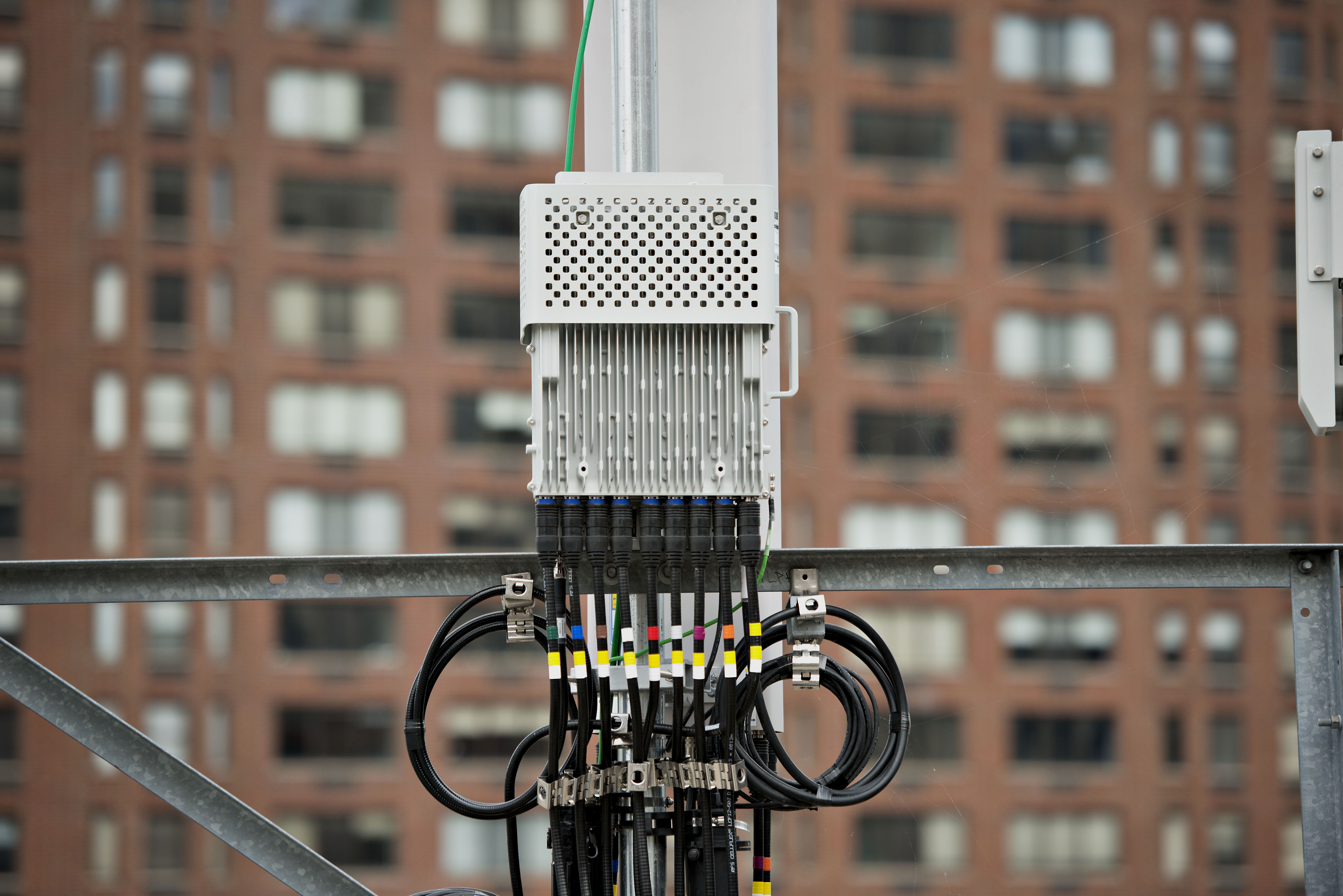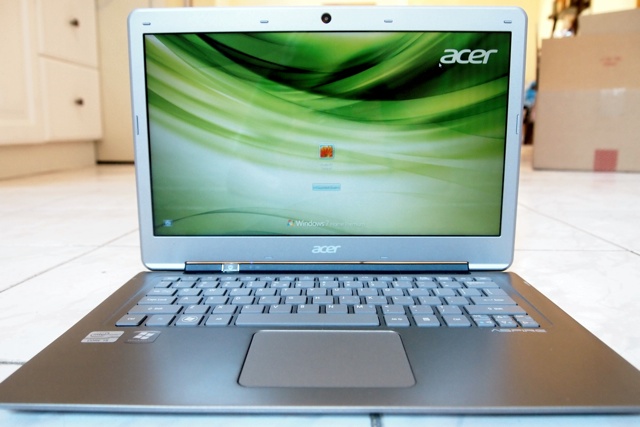Cheugiest tech moments of 2021
NEWSTechnology has come a long way in 2021. There’s widespread mRNA vaccines! An asteroid-deflecting space mission! A very powerful laptop with a very controversial notch! But it’s unfortunately easier to think about the cringiest moments of the year than it is to remember times when we marveled at indoor farming robots.
So hop aboard the choo-choo-cheugy train. We promise, this isn’t just a list of things Elon Musk tweeted in 2021.
Facebook is so Meta
The biggest and most eye-wateringly silly rebrand of the year is uncontested: Facebook, one of the most recognizable names in the world, changed its name to Meta in order to distract from unflaggingly awful decisions and the irreparable harm it has caused countless people focus on the “metaverse,” something no one asked for and certainly no one wanted Facebook of all companies to take the lead on.
Block this out
Meta’s not the only rebrand that went teeth-grindingly meta this year. Readers, we present… Block, FKA Square, originally a small business champion known for square-shaped card swiping dongles (quant!). Now, it’s taking a bite out of blockchain for its new name and identity, although apparently Block is not just about that. The company says it’s also a reference to block parties, building code, obstacles to overcome, “and of course, tungsten cubes.” (click for more cringe) Well, not so fast, Jack! H&R Block is already suing Block for trademark infringement, with the name, a block in its logo, and a green color scheme that all come a little too close to home, since H&R Block, best known for tax filing prep, also happens to sell accounting services to SMBs, mobile banking to consumers and other fintech services just like Square’s… I mean, Block’s. Hard to guess which blockhead will back down first/move to settle here.
Saturday Night Musk

Image Credits: Bloomberg (opens in a new window) / Getty Images
Mr. Musk perhaps said it best when he played a doctor in the Gen Z Hospital skit: “You all might want to sit down, what I have to say might be a little cringe.” Elon may have hoodwinked a substantial part of the population of global fanboys hoping to get rich on his coattails, but at the end of the day this couldn’t hold any water on Saturday Night Live. He’s not an actor, and he’s not that funny, so even with the wattage of being one of the world’s richest men and a major celeb on social media, his SNL hosting was… a smug, wooden, boring, awkward dud. You’re left wondering how/why he was anointed to be in the limelight in the first place (but then again, I wonder that about him most of the time).
How do you do, fellow NFT owners
The gold rush over NFTs caused some otherwise smart people to attempt to implement them in regrettable ways. Numerous companies announced NFT-adjacent projects, like using them to tokenize fanfic, in-game items, Discord things(?), and so on. After failing to read the internet in general’s skepticism of this interesting but at present highly dubious tech, the companies backpedaled madly, sometimes within hours of announcements or rumors. Literally anyone would have said it was a bad idea, try asking next time!
Bezos thanks everyone for their money, which he shot into space
The relentless self-congratulatory fanfare around Blue Origin and Virgin Galactic’s first “real” trips to space was extremely tiring. While there was some relief in Branson’s company getting grounded for shady maneuvers, and in Bezos eliciting scorn for his tamales and his giant hat, the chef’s-kiss moment was the latter’s tone-deaf thanks offered to the world that financed his ego trip by shopping at his ethically bankrupt mega-corporation. “I want to thank every Amazon employee, and every Amazon customer, because you guys paid for all this.” I’m sure he meant every word, which is why it’s so bad. (Also pity the poor cowboy hat, which Bezos has definitely also ruined for me.)
Blue Origin whining postpones the next Moon landing
After losing big time on the Human Landing System contract to arch-rival SpaceX, Blue Origin sued NASA, alleging impropriety. Its claims were dismissed in a highly embarrassing manner (NASA basically pantsed the company in front of the entire industry) but the necessary rigmarole resulted in the planned 2024 crewed lunar landing being pushed out to 2025. To be fair, we all suspected this would be the case anyway, but Blue presented itself as a perfect scapegoat. The blunder may have permanently tainted relations with NASA, which isn’t great when they’re pretty much Blue Origin’s only source of real money… other than “every Amazon employee, and every Amazon customer,” of course.
OnlyFans bans itself
We all know what OnlyFans is for, and it’s been great seeing a platform where sex workers, among others, can monetize themselves. Until that platform abruptly announced that the people who’d made it rich in the first place were henceforth banned. Bye, good luck! The backlash was so severe that the decision, unconvincingly blamed on prudish bankers, was reversed within a week. Don’t bite the hand that feeds you, people. (Unless the hand consents as part of a healthy fantasy.)
From the desk of Donald J. Trump
Trump’s tempestuous relationship with social media is perhaps too serious a matter to treat of here, but one aspect of it deserves a palm to the face, and that’s his short-lived “social” platform, From The Desk of Donald J. Trump. This barebones microblog appeared after his ouster from every major social media network, but it was so minimally functional and got so little traffic that it only lasted a month or so before being mothballed. No doubt so his media team could focus on borrowing Mastodon’s code for the follow-up, Truth Social. But even that was all just preliminary to the desperate-looking pitch deck and SPAC we would receive later in the year. As they say, if at first you fail badly, fail, fail again.
Senator Blumenthal asks Facebook rep to “commit to ending finsta”
Now known as the Facebook whistleblower, Frances Haugen leaked thousands of internal documents from her former employer, including some showing that Instagram is aware of its adverse effect on teenage girls. Soon after, Facebook Global Head of Security Antigone Davis was summoned to testify before the Senate about children’s internet safety.
Senator Richard Blumenthal (D-CT), a 75-year-old, was worried about young people using secret accounts that they hid from their parents.
“Will you commit to ending finsta?” he asked.
“Senator, let me explain. We don’t actually do finsta. What finsta refers to is young people setting up accounts where they may want to have more privacy,” Davis patiently replied.
Facebook’s leaked benefits enrollment video
It must be hard to work at Facebook – or, as it’s called now, Meta – on days when the company is getting loads of bad press for, you know, not doing enough to stop the January 6 insurrection. But it’s also probably hard to work at Facebook when you have to enroll in your benefits.
There’s some pretty awful stuff detailed in the files that Haugen leaked, but if you want to experience some lower-stakes incredulity at our Metaverse overlords, check out this video. I’m sure Facebook has good benefits – they’re a huge, trillion-dollar tech company, after all – but is the subsidized care even worth it when there’s choreographed dancing involved?
NFTs aren’t even good at gatekeeping
Bored Apes Yacht Club is like a fraternity for people who love Coinbase. Instead of paying dues to join an exclusive Greek society of bros, you can buy a 52 ETH (~$210,000 at time of publication) NFT of an ape to be part of a cool club. Yes, Jimmy Fallon, Steph Curry and Post Malone are Yacht Club members – just like how some B-list actor was in your college’s fraternity twenty years before you were born. But it’s not just about the ape – the value of the NFT is that you get access to fancy events and stuff. So, nightlife journalist Adlan Jackson concocted a clever plan to sneak into a Bored Apes party.
As it turned out, a friend’s boss owned an Ape and sent Jackson a screenshot of a QR code that could get them into the party. The bouncers were checking for some wristband from a previous event, though, not the literal NFT, so he was turned away despite his Ape possession. Later in the night, Jackson tried to get in again, and… they simply let him in. No wristband, no NFT, no nothing. So much for exclusivity! Luckily, Jackson was just in time to see The Strokes frontman Julian Casablancas ask on stage, “This is kind of about art, right? NFTs? I don’t know, what the hell. All I know is… a lot of dudes here tonight.”
Please make it stop
If NFTs are now blowing up in the speculation bubble that is financial social media (how does that not have a short name? FiSo?) they owe a lot to Gamestop, the memestock that could. The company could have headed into oblivion like so many other mediocre retailers crowded out by innovations in technology, consumer habits and changing tastes in entertainment. But instead, it was picked up and carried on the wings of a wave of hype that drove its price into the stratosphere, leading to so, so many questions about who gets to be the gatekeeper in the world of trading, who makes money, and who are the biggest losers. You hate to see people getting manipulated, but also understand why those who bought in hated to be treated like unempowered peons. No one gets covered in glory in this one. But amazing, there has yet to be a final chapter in this saga: the stock is lower compared to January’s stratospheric peak, but it’s not that far off.
Spotify Wrapped is cheugy
Yeah, yeah, we know that sharing your Spotify Wrapped round-up is basically just doing free PR for Spotify. But the copywriting on Wrapped read like it was penned by a forty-year-old communications staffer who asked his niece for some phrases that gen-Zers like.Spotify even hired an aura reader named Mystic Michaela to collaborate with them on generating audio auras. The result? Cheugy.
“There was one podcast that lived in your head, rent-free, all year long,” it said.
“You always understood the assignment.”
“While everyone else was trying to figure out what NFTs were, you had one song on repeat.”
“You deserve a playlist as long as your skincare routine.”
Elizabeth Holmes has stans
Former Theranos founder and CEO Elizabeth Holmes was on trial for criminal fraud for over four months this year. But on the first day of the trial, some fans – yes, fans – showed up dressed as Elizabeth Holmes. If you’re blonde, it’s a pretty easy costume – just wear a black turtleneck and some red lipstick, put your hair in a low ponytail, and there you go! You’re ready for the Halloween party!
But these cosplayers were legit, as far as the reporters who talked to them could tell. They really admired Elizabeth Holmes, despite the fact that she may or may not be guilty of serious criminal fraud charges running a company that actively jeopardized people’s health by giving them false blood test results. But to each their own.
Even LinkedIn wants to be like TikTok
Basically every social or entertainment platform is finding a way to wedge in a vertically-oriented short form video feed. It makes sense for direct TikTok competitors like Instagram or Snapchat to do this, even though it feels very inorganic and derivative. But toward the end of the year, even companies like Netflix, Spotify, Reddit, Twitter and Pinterest were trying it out. In 2022, Linkedin plans to join them.
The professional networking platform tried doing stories this year, but it wasn’t as successful as Instagram at integrating that Snapchat copy-cat feature.
Fleets fly away
Then again, Twitter didn’t do so hot with Fleets either. I guess you could have seen the writing on the wall with this one: Twitter basically sealed Fleets’ fate with its very name. Its own attempt to throw a hat into the short, ephemeral videos never quite struck a note with Twitter users, who mainly love the format precisely for what it does differently from the rest of social media: fast-paced, short punctuations of words and pictures that flutter down from each other with biting humor, searing criticism, perfectly-timed factoids and occasional glimpses of greatness, regardless of your follow numbers. Who really needs another Story format? Especially one launching so late in the day, with no great twist or even easy way to be used?
Instagram forgot to turn on teen safety features on the web
In July, Instagram tried to cover its metaphorical ass when it comes to user safety by rolling out some new features. One feature made it so that any new account from a user under 16 would default to private. But Senator Marsha Blackburn (R-TN) put tech journalists to shame by unearthing a scoop that was right in front of our eyes for months. If a teen made an Instagram account on the web, it defaulted to public.
To be fair, who even uses Instagram for the web? Still, this felt like a pretty big oversight. Head of Instagram Adam Mosseri had to admit under oath that his team messed up. It was pretty cringe, but at the same time, it’s an alarming, lackadaisical error for a company that’s been repeatedly defending its commitment to teen safety in the Senate this fall.
The headline of this article
It was Devin’s idea. Amanda enthusiastically approved. Still cheugy.










